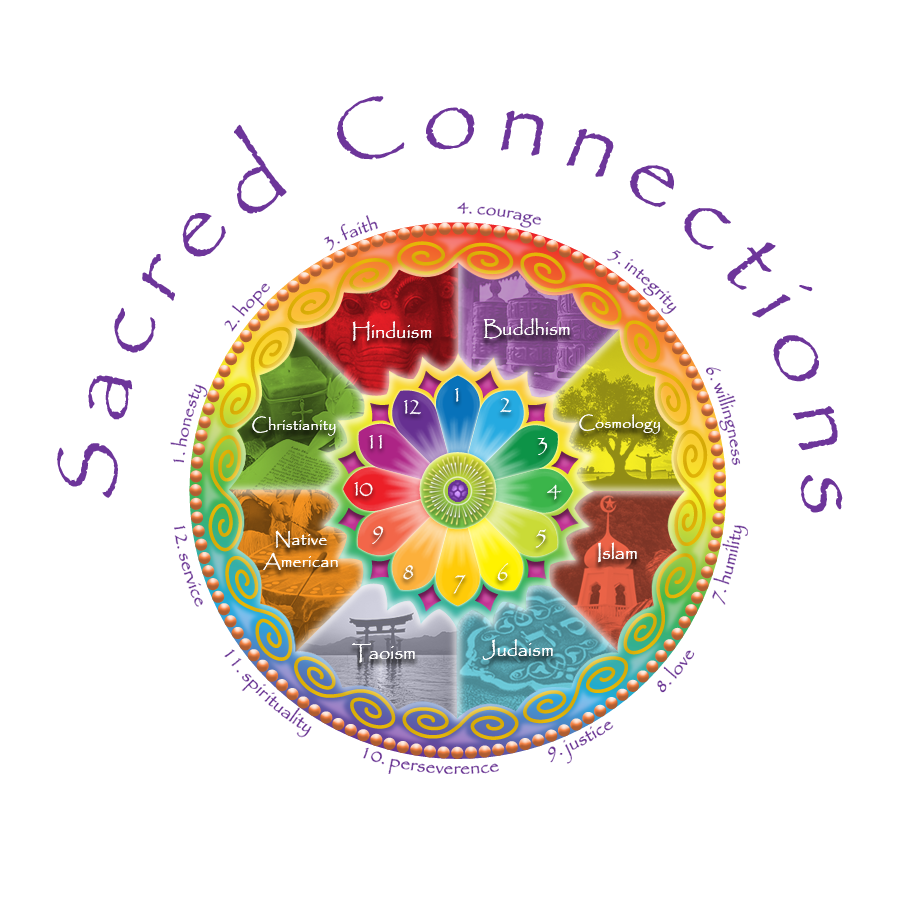Thou shalt love the Lord thy God with all thy heart
People of most cultures and faith traditions have created mandalas throughout the ages. Some of the earliest images were found on the walls of caves. They are most often created as circles, representing the Earth, Sun, and cosmos to symbolize the state of being whole or complete. Historical examples of “living” mandalas are Stonehenge, Native American medicine wheels and dream catchers, and Dogon dwellings in Mali, Africa.
At the center of the mandala is a focal point called the “bindu” which means “drop” in Sanskrit. It is intended to be the “stillpoint” or the calm in the middle of the pond. From the bindu the mandala opens like a lotus blossom. Mandalas are created with patterns of symmetry, repetition and contrasts. Visually they can create an hypnotic effect which when repeated can change the rhythms and patterns of your brain waves, resulting in a reduction in stress, and increased relaxation.
The purpose of this meditative practice is to experience inner tranquility, to develop an inner sense of completeness, and discover a sense of unity with all that is.
Carl Jung, psychologist, believed that mandalas are a key to personal transformation because they represent the archetype of wholeness. The circle, at the macro or meta level, symbolizes the cosmos (the macrocosm) in which each of us is a single living creature (a microcosm). Meditating on the mandala expands our inner awareness allowing us to recognize our interconnectedness with all that is in the universe. When we gain this understanding at a deep cellular level, we feel a sense of purpose, of belonging, of harmony and completion. We know that we are an integral part of the life-force of the universe.
- Select a mandala that resonates with you; one that draws you in to exploring its depths for a deeper meaning
- Place the mandala in a place where you can sit and gaze at it easily
- Sit comfortably on a cushion or chair in a quiet place where you will not be interrupted
- Plan to initially spend at least 10 minutes
- Take three deep, slow breaths and then rest into your normal breathing pattern
- Rest your gaze on the center of the mandala allowing your eyes to focus softly
- Let your gaze and attention wander from the center (bindu) through the mandala experiencing the patterns and structure
- If any thoughts begin to distract you, note them, let them go and return to visually wandering through the patterns
- After ten minutes or more, when you are ready to stop, take three deep, slow breaths and then rest into your normal breathing pattern
- Take a few moments of stillness to recognize feelings of calm, peace and relaxation
- You may elect to journal your thoughts, feelings, insights, and reflections after each mandala meditation. Over time you may recognize patterns which bring meaning to better understanding yourself and your relationship to your inner and outer world
